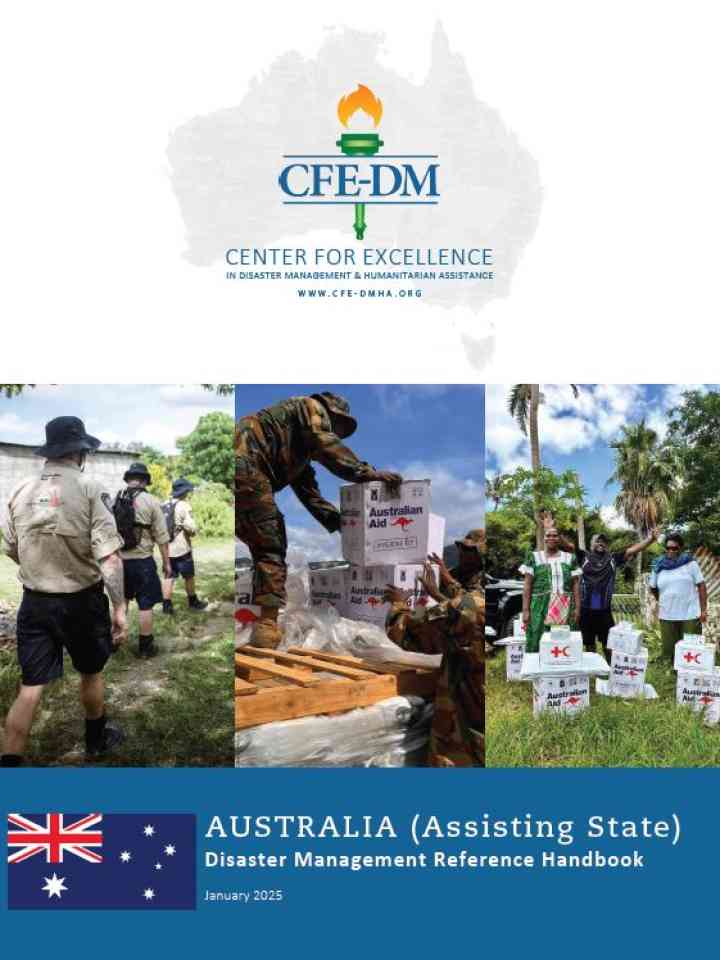Australia (assisting state) disaster management reference handbook
This updated Australia (Assisting State) Disaster Management Reference Handbook is intended to serve as an initial source of information for individuals preparing for disaster risk reduction activities or immediate deployment alongside Australian partner responders. It highlights the important role Australia plays in preparing for, mitigating, responding to, and recovering from a natural disaster or regional crisis particularly in the Indo-Pacific region. By ensuring the availability of this information, the CFE-DM hopes to provide disaster management decision makers, planners, and responders greater insight into Australia’s disaster management capabilities and, thereby, enhance regional civil-military response.
The Australian Government’s newly-published Humanitarian Policy (2024) prioritizes readiness and preparedness, delivering support to crisis-affected communities, and reinforcing the international humanitarian system. Meanwhile, the country’s International Development Policy of 2023 is geared toward emerging global challenges, including exacerbated climate hazards. Both policies emphasize the need to support partners in further enhancing their resilience and capacities, and they focus on strengthening preparedness and mitigation by investing in disaster risk reduction (DRR). Australia has a range of specialized capabilities that facilitate international disaster responses under the Department of Foreign Affairs and Trade (DFAT), which is the lead agency for the Australian Government’s response to international humanitarian crises. While DFAT is Australia’s government lead in overseas assistance, it does not work alone. Interagency support comes from the National Emergency Management Agency (NEMA), which works with DFAT to deploy domestic disaster response capabilities, drawn from Australian states and territories, as needed for international response.
Explore further
